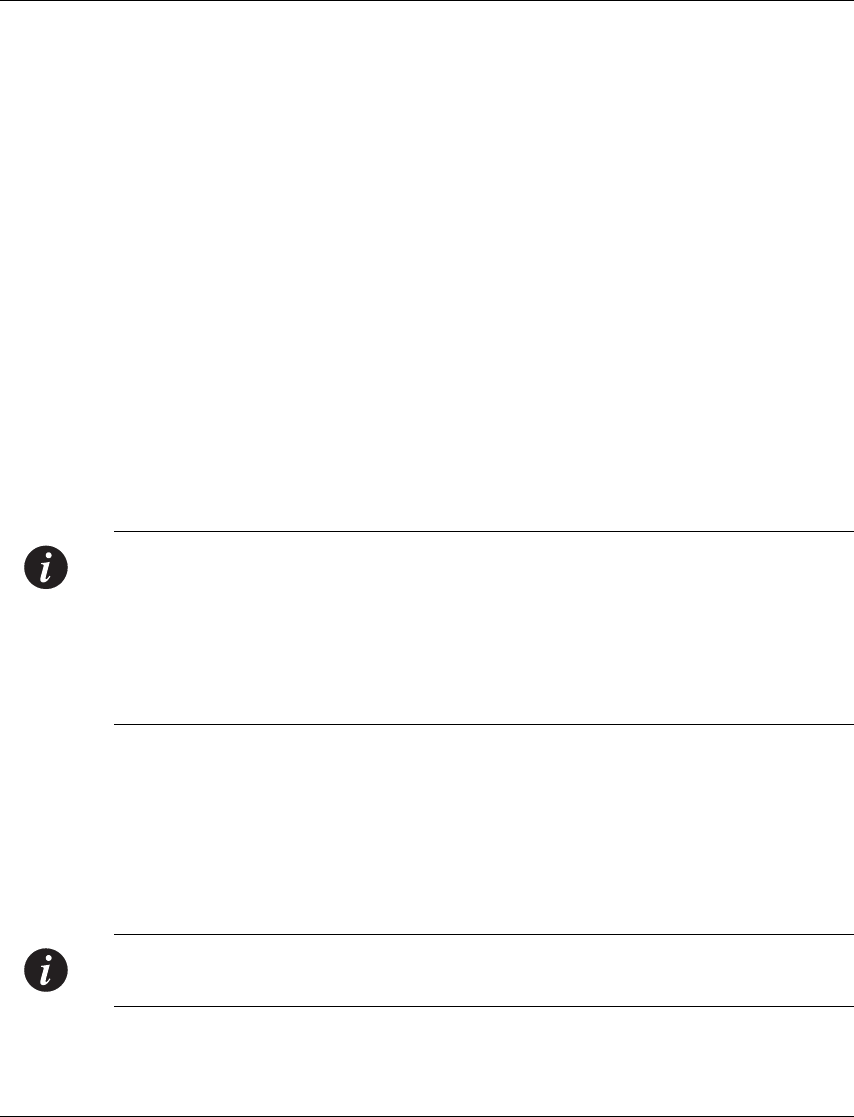
Chapter 14 Load Balancing in the P333R-LB
34 Avaya P333R-LB User’s Guide
P333R-LB-1(super-v-srvr:slb)#virtual-slb-service http
Done!
P333R-LB-1(super-v-slb-srvc:slb:http)#id 1
Done!
P333R-LB-1(super-v-slb-srvc:slb:http)#application tcp 80
Done!
P333R-LB-1(super-v-slb-srvc:slb:http)#pip-bank 1
Done!
P333R-LB-1(super-v-slb-srvc:slb:http)#rsg server-group
Done!
P333R-LB-1(super-v-slb-srvc:slb:http)#exit
P333R-LB-1(super-v-srvr:slb)#exit
P333R-LB-1(super)#
To insure that the packets destined to the PIP address reach the P333R-LB on the
return path from the Real Server to the client, you must configure a Static Route in
the router by entering: ip route 10.3.3.0 255.255.255.0 193.170.3.1 1
low
Note: The above configuration example stresses that even when there is a direct
path from the router to the clients, with Full NAT the traffic is forced to traverse the
P333R-LB for PIP-client IP translation. With Half NAT, in such a scenario, load-
balanced sessions would have failed. This is because traffic from the Real Servers
would have been routed directly to the clients, before reaching the P333R-LB. The
clients expect a reply from the VIP, but instead would receive the reply from the real
IP, and drop the packets.
Direct Server Return (DSR) (Triangulation) Redirection
In Direct Server Return (Triangulation) redirection, the redirection is based on
replacing the destination MAC address with that of the Real Server. The Real Server
is configured to send responses to the clients with the VIP as the source address. As
a result, traffic is not required to traverse the load balancer.
Note: You can not implement DSR for Services using Full NAT, since the P333R-LB
must replace the PIP with the original client IP for the returning packets.


















